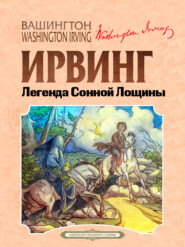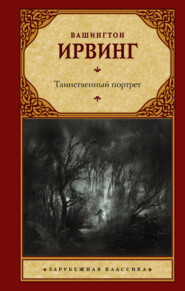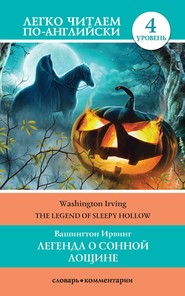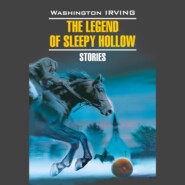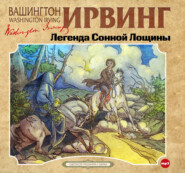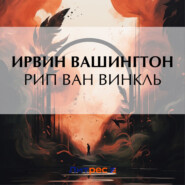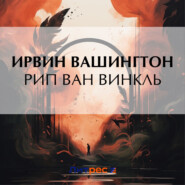По всем вопросам обращайтесь на: info@litportal.ru
(©) 2003-2025.
✖
Astoria; Or, Anecdotes of an Enterprise Beyond the Rocky Mountains
Настройки чтения
Размер шрифта
Высота строк
Поля
CHAPTER XXXIX
Scanty Fare During the Winter. – A Poor Hunting Ground. – The Return of the Fishing Season. – The Uthlecan or Smelt. – Its Qualities. – Vast Shoals of it. – Sturgeon. – Indian Modes of Taking It. – The Salmon – Different Species. – Nature of the Country About the Coast. – Forests and Forest Trees. – A Remarkable Flowering Vine. – Animals. – Birds. – Reptiles – Climate West of the Mountains – Mildness of the Temperature. – Soil of the Coast and the Interior.
THE winter passed away tranquilly at Astoria. The apprehensions of hostility from the natives had subsided; indeed, as the season advanced, the Indians for the most part had disappeared from the neighborhood, and abandoned the sea-coast, so that, for want of their aid, the colonists had at times suffered considerably for want of provisions. The hunters belonging to the establishment made frequent and wide excursions, but with very moderate success. There were some deer and a few bears to be found in the vicinity, and elk in great numbers; the country, however, was so rough, and the woods so close and entangled that it was almost impossible to beat up the game. The prevalent rains of winter, also, rendered it difficult for the hunter to keep his arms in order. The quantity of game, therefore, brought in by the hunters was extremely scanty, and it was frequently necessary to put all hands on very moderate allowance. Towards spring, however, the fishing season commenced – the season of plenty on the Columbia. About the beginning of February, a small kind of fish, about six inches long, called by the natives the uthlecan, and resembling the smelt, made its appearance at the mouth of the river. It is said to be of delicious flavor, and so fat as to burn like a candle, for which it is often used by the natives. It enters the river in immense shoals, like solid columns, often extending to the depth of five or more feet, and is scooped up by the natives with small nets at the end of poles. In this way they will soon fill a canoe, or form a great heap upon the river banks. These fish constitute a principal article of their food; the women drying them and stringing them on cords. As the uthlecan is only found in the lower part of the river, the arrival of it soon brought back the natives to the coast; who again resorted to the factory to trade, and from that time furnished plentiful supplies of fish.
The sturgeon makes its appearance in the river shortly after the uthlecan, and is taken in different ways by the natives: sometimes they spear it; but oftener they use the hook and line, and the net. Occasionally, they sink a cord in the river by a heavy weight, with a buoy at the upper end, to keep floating. To this cord several hooks are attached by short lines, a few feet distant from each other, and baited with small fish. This apparatus is often set towards night, and by the next morning several sturgeon will be found hooked by it; for though a large and strong fish, it makes but little resistance when ensnared.
The salmon, which are the prime fish of the Columbia, and as important to the piscatory tribes as are the buffaloes to the hunters of the prairies, do not enter the river until towards the latter part of May, from which time, until the middle of August, they abound and are taken in vast quantities, either with the spear or seine, and mostly in shallow water. An inferior species succeeds, and continues from August to December. It is remarkable for having a double row of teeth, half an inch long and extremely sharp, from whence it has received the name of the dog-toothed salmon. It is generally killed with the spear in small rivulets, and smoked for winter provision. We have noticed in a former chapter the mode in which the salmon are taken and cured at the falls of the Columbia; and put tip in parcels for exportation. From these different fisheries of the river tribes, the establishment at Astoria had to derive much of its precarious supplies of provisions.
A year’s residence at the mouth of the Columbia, and various expeditions in the interior, had now given the Astorians some idea of the country. The whole coast is described as remarkably rugged and mountainous; with dense forests of hemlock, spruce, white and red cedar, cotton-wood, white oak, white and swamp ash, willow, and a few walnut. There is likewise an undergrowth of aromatic shrubs, creepers, and clambering vines, that render the forests almost impenetrable; together with berries of various kinds, such as gooseberries, strawberries, raspberries, both red and yellow, very large and finely flavored whortleberries, cranberries, serviceberries, blackberries, currants, sloes, and wild and choke cherries.
Among the flowering vines is one deserving of particular notice. Each flower is composed of six leaves or petals, about three inches in length, of a beautiful crimson, the inside spotted with white. Its leaves, of a fine green, are oval, and disposed by threes. This plant climbs upon the trees without attaching itself to them; when it has reached the topmost branches, it descends perpendicularly, and as it continues to grow, extends from tree to tree, until its various stalks interlace the grove like the rigging of a ship. The stems or trunks of this vine are tougher and more flexible than willow, and are from fifty to one hundred fathoms in length. From the fibres, the Indians manufacture baskets of such close texture as to hold water.
The principal quadrupeds that had been seen by the colonists in their various expeditions were the stag, fallow deer, hart, black and grizzly bear, antelope, ahsahta or bighorn, beaver, sea and river otter, muskrat, fox, wolf, and panther, the latter extremely rare. The only domestic animals among the natives were horses and dogs.
The country abounded with aquatic and land birds, such as swans, wild geese, brant, ducks of almost every description, pelicans, herons, gulls, snipes, curlews, eagles, vultures, crows, ravens, magpies, woodpeckers, pigeons, partridges, pheasants, grouse, and a great variety of singing birds.
There were few reptiles; the only dangerous kinds were the rattlesnake, and one striped with black, yellow, and white, about four feet long. Among the lizard kind was one about nine or ten inches in length, exclusive of the tall, and three inches in circumference. The tail was round, and of the same length as the body. The head was triangular, covered with small square scales. The upper part of the body was likewise covered with small scales, green, yellow, black, and blue. Each foot had five toes, furnished with strong nails, probably to aid it in burrowing, as it usually lived under ground on the plains.
A remarkable fact, characteristic of the country west of the Rocky Mountains, is the mildness and equability of the climate. The great mountain barrier seems to divide the continent into different climates, even in the same degrees of latitude. The rigorous winters and sultry summers, and all the capricious inequalities of temperature prevalent on the Atlantic side of the mountains, are but little felt on their western declivities. The countries between them and the Pacific are blessed with milder and steadier temperature, resembling the climates of parallel latitudes in Europe. In the plains and valleys but little snow falls throughout the winter, and usually melts while falling. It rarely lies on the ground more than two days at a time, except on the summits of the mountains. The winters are rainy rather than cold. The rains for five months, from the middle of October to the middle of March, are almost incessant, and often accompanied by tremendous thunder and lightning. The winds prevalent at this season are from the south and southeast, which usually bring rain. Those from the north to the southwest are the harbingers of fair weather and a clear sky. The residue of the year, from the middle of March to the middle of October, an interval of seven months, is serene and delightful. There is scarcely any rain throughout this time, yet the face of the country is kept fresh and verdant by nightly dews, and occasionally by humid fogs in the mornings. These are not considered prejudicial to health, since both the natives and the whites sleep in the open air with perfect impunity. While this equable and bland temperature prevails throughout the lower country, the peaks and ridges of the vast mountains by which it is dominated, are covered with perpetual snow. This renders them discernible at a great distance, shining at times like bright summer clouds, at other times assuming the most aerial tints, and always forming brilliant and striking features in the vast landscape. The mild temperature prevalent throughout the country is attributed by some to the succession of winds from the Pacific Ocean, extending from latitude twenty degrees to at least fifty degrees north. These temper the heat of summer, so that in the shade no one is incommoded by perspiration; they also soften the rigors of winter, and produce such a moderation in the climate, that the inhabitants can wear the same dress throughout the year.
The soil in the neighborhood of the sea-coast is of a brown color, inclining to red, and generally poor; being a mixture of clay and gravel. In the interior, and especially in the valleys of the Rocky Mountains, the soil is generally blackish, though sometimes yellow. It is frequently mixed with marl, and with marine substances in a state of decomposition. This kind of soil extends to a considerable depth, as may be perceived in the deep cuts made by ravines, and by the beds of rivers. The vegetation in these valleys is much more abundant than near the coast; in fact, it is these fertile intervals, locked up between rocky sierras, or scooped out from barren wastes, that population must extend itself, as it were, in veins and ramifications, if ever the regions beyond the mountains should become civilized.
CHAPTER XL
Natives in the Neighborhood of Astoria – Their Persons and Characteristics. – Causes of Deformity – Their Dress. – Their Contempt of Beards – Ornaments – Armor and Weapons. – Mode of Flattening the Head. – Extent of the Custom. – Religious Belief. – The Two Great Spirits of the Air and of the Fire. – Priests or Medicine Men. – The Rival Idols. – Polygamy a Cause of Greatness-Petty Warfare. – Music, Dancing, Gambling. – Thieving a Virtue. – Keen Traders – Intrusive Habits – Abhorrence of Drunkenness – Anecdote of Comcomly.
A BRIEF mention has already been made of the tribes or hordes existing about the lower part of the Columbia at the time of the settlement; a few more particulars concerning them may be acceptable. The four tribes nearest to Astoria, and with whom the traders had most intercourse, were, as has heretofore been observed, the Chinooks, the Clatsops, the Wahkiacums, and the Cathlamets. The Chinooks reside chiefly along the banks of a river of the same name, running parallel to the sea-coast, through a low country studded with stagnant pools, and emptying itself into Baker’s Bay, a few miles from Cape Disappointment. This was the tribe over which Comcomly, the one-eyed chieftain, held sway; it boasted two hundred and fourteen fighting men. Their chief subsistence was on fish, with an occasional regale of the flesh of elk and deer, and of wild-fowl from the neighboring ponds.
The Clatsops resided on both sides of Point Adams; they were the mere relics of a tribe which had been nearly swept off by the small-pox, and did not number more than one hundred and eighty fighting men.
The Wahkiacums, or Waak-i-cums, inhabited the north side of the Columbia, and numbered sixty-six warriors. They and the Chinooks were originally the same; but a dispute arising about two generations previous to the time of the settlement, between the ruling chief and his brother Wahkiacum, the latter seceded, and with his adherents formed the present horde which continues to go by his name. In this way new tribes or clans are formed, and lurking causes of hostility engendered.
The Cathlamets lived opposite to the lower village of the Wahkiacums, and numbered ninety-four warriors.
These four tribes, or rather clans, have every appearance of springing from the same origin, resembling each other in person, dress, language, and manners. They are rather a diminutive race, generally below five feet five inches, with crooked legs and thick ankles – a deformity caused by their passing so much of their time sitting or squatting upon the calves of their legs and their heels, in the bottom of their canoes – a favorite position, which they retain, even when on shore. The women increase the deformity by wearing tight bandages round the ankles, which prevent the circulation of the blood, and cause a swelling of the muscles of the leg.
Neither sex can boast of personal beauty. Their faces are round, with small but animated eyes. Their noses are broad and flat at top, and fleshy at the end, with large nostrils. They have wide mouths, thick lips, and short, irregular and dirty teeth. Indeed good teeth are seldom to be seen among the tribes west of the Rocky Mountains, who live simply on fish.
In the early stages of their intercourse with white men, these savages were but scantily clad. In summer time the men went entirely naked; in the winter and in bad weather the men wore a small robe, reaching to the middle of the thigh, made of the skins of animals, or of the wool of the mountain sheep. Occasionally, they wore a kind of mantle of matting, to keep off the rain but, having thus protected the back and shoulders, they left the rest of the body naked.
The women wore similar robes, though shorter, not reaching below the waist; besides which, they had a kind of petticoat, or fringe, reaching from the waist to the knee, formed of the fibres of cedar bark, broken into strands, or a tissue of silk grass twisted and knotted at the ends. This was the usual dress of the women in summer; should the weather be inclement, they added a vest of skins, similar to the robe.
The men carefully eradicated every vestige of a beard, considering it a great deformity. They looked with disgust at the whiskers and well-furnished chins of the white men, and in derision called them Long-beards. Both sexes, on the other hand, cherished the hair of the head, which with them is generally black and rather coarse. They allowed it to grow to a great length and were very proud and careful of it, sometimes wearing it plaited, sometimes wound round the head in fanciful tresses. No greater affront could be offered to them than to cut off their treasured locks.
They had conical hats with narrow rims, neatly woven of bear grass or of the fibres of cedar bark, interwoven with designs of various shapes and colors; sometimes merely squares and triangles, at other times rude representations of canoes, with men fishing and harpooning. These hats were nearly waterproof, and extremely durable.
The favorite ornaments of the men were collars of bears’ claws, the proud trophies of hunting exploits; while the women and children wore similar decorations of elks’ tusks. An intercourse with the white traders, however, soon effected a change in the toilets of both sexes. They became fond of arraying themselves in any article of civilized dress which they could procure, and often made a most grotesque appearance. They adapted many articles of finery, also, to their own previous tastes. Both sexes were fond of adorning themselves with bracelets of iron, brass, or copper. They were delighted, also, with blue and white beads, particularly the former, and wore broad tight bands of them round the waist and ankles, large rolls of them round the neck, and pendants of them in the ears. The men, especially, who in savage life carry a passion for personal decoration further than the females, did not think their gala equipments complete unless they had a jewel of hiaqua, or wampum, dangling at the nose. Thus arrayed, their hair besmeared with fish oil, and their bodies bedaubed with red clay, they considered themselves irresistible.
When on warlike expeditions, they painted their faces and bodies in the most hideous and grotesque manner, according to the universal practice of American savages. Their arms were bows and arrows, spears, and war clubs. Some wore a corselet of pieces of hard wood laced together with bear grass, so as to form a light coat of mail, pliant to the body; and a kind of casque of cedar bark, leather, and bear grass, sufficient to protect the head from an arrow or war club. A more complete article of defensive armor was a buff jerkin or shirt of great thickness, made of doublings of elk skin, and reaching to the feet, holes being left for the head and arms. This was perfectly arrowproof; add to which, it was often endowed with charmed virtues, by the spells and mystic ceremonials of the medicine man, or conjurer.
Of the peculiar custom, prevalent among these people, of flattening the head, we have already spoken. It is one of those instances of human caprice, like the crippling of the feet of females in China, which are quite incomprehensible. This custom prevails principally among the tribes on the sea-coast, and about the lower parts of the rivers. How far it extends along the coast we are not able to ascertain. Some of the tribes, both north and south of the Columbia, practice it; but they all speak the Chinook language, and probably originated from the same stock. As far as we can learn, the remoter tribes, which speak an entirely different language, do not flatten the head. This absurd custom declines, also, in receding from the shores of the Pacific; few traces of it are to be found among the tribes of the Rocky Mountains, and after crossing the mountains it disappears altogether. Those Indians, therefore, about the head waters of the Columbia, and in the solitary mountain regions, who are often called Flatheads, must not be supposed to be characterized by this deformity. It is an appellation often given by the hunters east of the mountain chain, to all western Indians, excepting the Snakes.
The religious belief of these people was extremely limited and confined; or rather, in all probability, their explanations were but little understood by their visitors. They had an idea of a benevolent and omnipotent spirit, the creator of all things. They represent him as assuming various shapes at pleasure, but generally that of an immense bird. He usually inhabits the sun, but occasionally wings his way through the aerial regions, and sees all that is doing upon earth. Should anything displease him, he vents his wrath in terrific storms and tempests, the lightning being the flashes of his eyes, and the thunder the clapping of his wings. To propitiate his favor they offer to him annual sacrifices of salmon and venison, the first fruits of their fishing and hunting.
Besides this aerial spirit they believe in an inferior one, who inhabits the fire, and of whom they are in perpetual dread, as, though he possesses equally the power of good and evil, the evil is apt to predominate. They endeavor, therefore, to keep him in good humor by frequent offerings. He is supposed also to have great influence with the winged spirit, their sovereign protector and benefactor. They implore him, therefore, to act as their interpreter, and procure them all desirable things, such as success in fishing and hunting, abundance of game, fleet horses, obedient wives, and male children.
These Indians have likewise their priests, or conjurers, or medicine men, who pretend to be in the confidence of the deities, and the expounders and enforcers of their will. Each of these medicine men has his idols carved in wood, representing the spirits of the air and of the fire, under some rude and grotesque form of a horse, a bear, a beaver, or other quadruped, or that of bird or fish. These idols are hung round with amulets and votive offerings, such as beavers’ teeth, and bears’ and eagles’ claws.
When any chief personage is on his death-bed, or dangerously ill, the medicine men are sent for. Each brings with him his idols, with which he retires into a canoe to hold a consultation. As doctors are prone to disagree, so these medicine men have now and then a violent altercation as to the malady of the patient, or the treatment of it. To settle this they beat their idols soundly against each other; whichever first loses a tooth or a claw is considered as confuted, and his votary retires from the field. Polygamy is not only allowed, but considered honorable, and the greater number of wives a man can maintain, the more important is he in the eyes of the tribe. The first wife, however, takes rank of all the others, and is considered mistress of the house. Still the domestic establishment is liable to jealousies and cabals, and the lord and master has much difficulty in maintaining harmony in his jangling household.
In the manuscript from which we draw many of these particulars, it is stated that he who exceeds his neighbors in the number of his wives, male children, and slaves, is elected chief of the village; a title to office which we do not recollect ever before to have met with.
Feuds are frequent among these tribes, but are not very deadly. They have occasionally pitched battles, fought on appointed days, and at specific places, which are generally the banks of a rivulet. The adverse parties post themselves on the opposite sides of the stream, and at such distances that the battles often last a long while before any blood is shed. The number of killed and wounded seldom exceed half a dozen. Should the damage be equal on each side, the war is considered as honorably concluded; should one party lose more than the other, it is entitled to a compensation in slaves or other property, otherwise hostilities are liable to be renewed at a future day. They are also given to predatory inroads into the territories of their enemies, and sometimes of their friendly neighbors. Should they fall upon a band of inferior force, or upon a village, weakly defended, they act with the ferocity of true poltroons, slaying all the men, and carrying off the women and children as slaves. As to the property, it is packed upon horses which they bring with them for the purpose. They are mean and paltry as warriors, and altogether inferior in heroic qualities to the savages of the buffalo plains on the east side of the mountains.
A great portion of their time is passed in revelry, music, dancing, and gambling. Their music scarcely deserves the name; the instruments being of the rudest kind. Their singing is harsh and discordant; the songs are chiefly extempore, relating to passing circumstances, the persons present, or any trifling object that strikes the attention of the singer. They have several kinds of dances, some of them lively and pleasing. The women are rarely permitted to dance with the men, but form groups apart, dancing to the same instrument and song.
They have a great passion for play, and a variety of games. To such a pitch of excitement are they sometimes roused, that they gamble away everything they possess, even to their wives and children. They are notorious thieves, also, and proud of their dexterity. He who is frequently successful, gains much applause and popularity; but the clumsy thief, who is detected in some bungling attempt, is scoffed at and despised, and sometimes severely punished.
Such are a few leading characteristics of the natives in the neighborhood of Astoria. They appear to us inferior in many respects to the tribes east of the mountains, the bold rovers of the prairies; and to partake much of Esquimaux character; elevated in some degree by a more genial climate and more varied living style.
The habits of traffic engendered at the cataracts of the Columbia, have had their influence along the coast. The Chinooks and other Indians at the mouth of the river, soon proved themselves keen traders, and in their early dealings with the Astorians never hesitated to ask three times what they considered the real value of an article. They were inquisitive, also, in the extreme, and impertinently intrusive; and were prone to indulge in scoffing and ridicule at the expense of the strangers.
In one thing, however, they showed superior judgment and self-command to most of their race; this was, in their abstinence from ardent spirits, and the abhorrence and disgust with which they regarded a drunkard. On one occasion a son of Comcomly had been induced to drink freely at the factory, and went home in a state of intoxication, playing all kinds of mad pranks, until he sank into a stupor, in which he remained for two days. The old chieftain repaired to his friend, M’Dougal, with indignation flaming in his countenance, and bitterly reproached him for having permitted his son to degrade himself into a beast, and to render himself an object of scorn and laughter to his slave.
CHAPTER XLI
Spring Arrangements at Astoria. – Various Expeditions Set Out. – The Long Narrows. – Pilfering Indians. – Thievish Tribe at Wish-ram. – Portage at the Falls – Portage by Moonlight. – An Attack, a Route, and a Robbery. – Indian Cure for Cowardice. – A Parley and Compromise. – The Despatch Party Turn Back. – Meet Crooks and John Day. – Their Sufferings. – Indian Perfidy. – Arrival at Astoria.
AS the spring opened, the little settlement of Astoria was in agitation, and prepared to send forth various expeditions. Several important things were to be done. It was necessary to send a supply of goods to the trading post of Mr. David Stuart, established in the preceding autumn on the Oakinagan. The cache, or secret deposit, made by Mr. Hunt at the Caldron Linn, was likewise to be visited, and the merchandise and other effects left there, to be brought to Astoria. A third object of moment was to send despatches overland to Mr. Astor at New York, informing him of the state of affairs at the settlement, and the fortunes of the several expeditions.
The task of carrying supplies to Oakinagan was assigned to Mr. Robert Stuart, a spirited and enterprising young man, nephew to the one who had established the post. The cache was to be sought out by two of the clerks, named Russell Farnham and Donald M’Gilles, conducted by a guide, and accompanied by eight men, to assist in bringing home the goods.
As to the despatches, they were confided to Mr. John Reed, the clerk, the same who had conducted one of the exploring detachments of Snake River. He was now to trace back his way across the mountains by the same route by which he had come, with no other companions or escort than Ben Jones, the Kentucky hunter, and two Canadians. As it was still hoped that Mr. Crooks might be in existence, and that Mr. Reed and his party might meet with him in the course of their route, they were charged with a small supply of goods and provisions, to aid that gentleman on his way to Astoria.
When the expedition of Reed was made known, Mr. M’Lellan announced his determination to accompany it. He had long been dissatisfied with the smallness of his interest in the copartnership, and had requested an additional number of shares; his request not being complied with, he resolved to abandon the company. M’Lellan was a man of a singularly self-willed and decided character, with whom persuasion was useless; he was permitted, therefore, to take his own course without opposition.
As to Reed, he set about preparing for his hazardous journey with the zeal of a true Irishman. He had a tin case made, in which the letters and papers addressed to Mr. Astor were carefully soldered up. This case he intended to strap upon his shoulders, so as to bear it about with him, sleeping and waking, in all changes and chances, by land or by water, and never to part with it but with his life!
As the route of these several parties would be the same for nearly four hundred miles up the Columbia, and within that distance would lie through the piratical pass of the rapids, and among the freebooting tribes of the river, it was thought advisable to start about the same time, and to keep together. Accordingly, on the 22d of March, they all set off, to the number of seventeen men, in two canoes – and here we cannot but pause to notice the hardihood of these several expeditions, so insignificant in point of force, and severally destined to traverse immense wildernesses where larger parties had experienced so much danger and distress. When recruits were sought in the preceding year among experienced hunters and voyageurs at Montreal and St. Louis, it was considered dangerous to attempt to cross the Rocky Mountains with less than sixty men; and yet here we find Reed ready to push his way across those barriers with merely three companions. Such is the fearlessness, the insensibility to danger, which men acquire by the habitude of constant risk. The mind, like the body, becomes callous by exposure.
The little associated band proceeded up the river, under the command of Mr. Robert Stuart, and arrived early in the month of April at the Long Narrows, that notorious plundering place. Here it was necessary to unload the canoes, and to transport both them and their cargoes to the head of the Narrows by land. Their party was too few in number for the purpose. They were obliged, therefore, to seek the assistance of the Cathlasco Indians, who undertook to carry the goods on their horses. Forward then they set, the Indians with their horses well freighted, and the first load convoyed by Reed and five men, well armed; the gallant Irishman striding along at the head, with his tin case of despatches glittering on his back. In passing, however, through a rocky and intricate defile, some of the freebooting vagrants turned their horses up a narrow path and galloped off, carrying with them two bales of goods, and a number of smaller articles. To follow them was useless; indeed, it was with much ado that the convoy got into port with the residue of the cargoes; for some of the guards were pillaged of their knives and pocket handkerchiefs, and the lustrous tin case of Mr. John Reed was in imminent jeopardy.
Mr. Stuart heard of these depredations, and hastened forward to the relief of the convoy, but could not reach them before dusk, by which time they had arrived at the village of Wish-ram, already noted for its great fishery, and the knavish propensities of its inhabitants. Here they found themselves benighted in a strange place, and surrounded by savages bent on pilfering, if not upon open robbery. Not knowing what active course to take, they remained under arms all night, without closing an eye, and at the very first peep of dawn, when objects were yet scarce visible, everything was hastily embarked, and, without seeking to recover the stolen effects, they pushed off from shore, “glad to bid adieu,” as they said, “to this abominable nest of miscreants.”
The worthies of Wish-ram, however, were not disposed to part so easily with their visitors. Their cupidity had been quickened by the plunder which they had already taken, and their confidence increased by the impunity with which their outrage had passed. They resolved, therefore, to take further toll of the travellers, and, if possible, to capture the tin case of despatches; which shining conspicuously from afar, and being guarded by John Reed with such especial care, must, as they supposed, be “a great medicine.”
Accordingly, Mr. Stuart and his comrades had not proceeded far in the canoes, when they beheld the whole rabble of Wishram stringing in groups along the bank, whooping and yelling, and gibbering in their wild jargon, and when they landed below the falls, they were surrounded by upwards of four hundred of these river ruffians, armed with bows and arrows, war clubs, and other savage weapons. These now pressed forward, with offers to carry the canoes and effects up the portage. Mr Stuart declined forwarding the goods, alleging the lateness of the hour; but, to keep them in good humor, informed them, that, if they conducted themselves well, their offered services might probably be accepted in the morning; in the meanwhile, he suggested that they might carry up the canoes. They accordingly set off with the two canoes on their shoulders, accompanied by a guard of eight men well armed.






